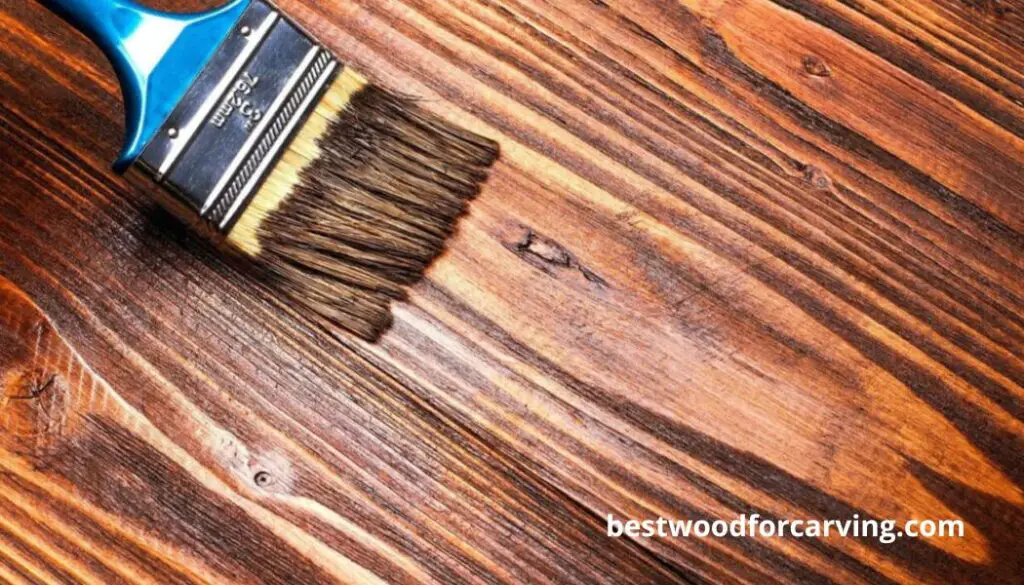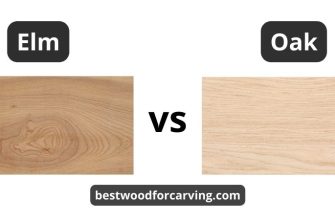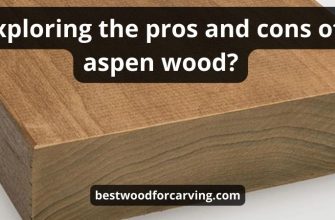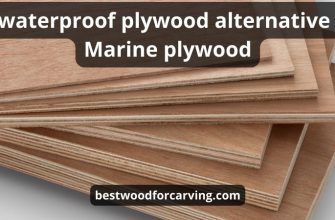One of the most affordable painting techniques is oil painting, which enables you to use your artwork on a variety of materials, including wood.
You can use oil paint on a vast variety of surfaces, including metal, walls, and even other plain surfaces. Aside from using oil paint on a canvas, what about painting on a wood surface?
- Can you use oil paints on wood?
- Will oil paint dry on wood?
- Preparing a wood surface: the oiling out procedure
- How To Prime Wood For Oil Painting?
- Wooden surfaces
- Gessoboard
- Plywood
- Softwoods
- Baltic Birch and Maple wood plywood
- Solid wood panels
- Mahogany
- MDF
- Clayboard
- Various paints for wood surface
- Oil-based wood paint
- Latex paints
- Water-based wood paint
- Acrylic craft paint for wood
- Oil canvas paint
- Different wood sealers
- Water-based wood sealers
- Oil-based wood sealers
- Different wood primers
- Oil-based wood primers
- Latex-based wood primers
- Shellac wood primers
- Applying oil paints on the wood surface
- Preparation
- Final touches and paintbrushes
- Paint additives
- Conclusion
- Frequently asked questions
- Is oil paint or acrylic better for wood?
- Can you use oil paint on wood without primer?
- Should I use oil or water-based paint on wood?
- Does wood need special paint?
- Which paint is best for woodwork?
- How long does oil paint last on wood?
- Benefits and drawbacks of covering wood with oil-based paints
- Pros
- Cons
- Is oil paint waterproof?
Can you use oil paints on wood?
Yes, you can do oil painting on wood but you have to prime the wood before painting it.
There are a few ways that this can be done, and it doesn’t take much time at all, but it absolutely must be done before any paint touches the wood surface.

Will oil paint dry on wood?
The wooden surface dries just like metal or canvas does when using oil-based paint on wood. While painting, however, you need enough air for the paint to cure properly.
In addition, good ventilation prevents wood from spoiling over time. Oil-based paint takes a while to dry because it is thick, usually 6 to 8 hours.
To help the oil paints dry more quickly if you’re painting inside, make sure to leave all doors and windows open. This permits proper airflow and permits the oil paint to be thoroughly aerated.

Preparing a wood surface: the oiling out procedure
The wood surface of the board needs to be prepared before you even consider touching it with any paint at all! This means that some kind of oil must be applied to the entire surface.
It is always a fantastic idea to use linseed oil, and it is highly advised. An excellent substitute for tung oil is linseed oil. Since turpentine is extremely toxic and should not be used if you have children or pets at home, it is preferred to it.

How To Prime Wood For Oil Painting?
You need to apply at least two layers of oil seal to prepare wood for oil painting. Make sure the wooden surface is free of dirt and dust because a surface covered in dust will make the primer appear ragged and uneven.
Once you’ve accomplished that, apply the sealer to the wood in a thin layer using a brush, and then give it time to completely dry.
Look over the entire piece of wood for any crooked or exposed areas, and then fill them in. Apply a second layer of sealant after that, and then give it time to thoroughly dry. Once you’ve completed that, you can prime the surface before painting.

Wooden surfaces
Birch and maple wood are favored for oil painting on wood. Since hardwood has a firm surface, the paint won’t crack as it dries. Additionally, because this surface is heavier than a canvas surface, you may easily create smaller paintings on it.
Because the wooden surface is smooth, the paint may easily glide over them, making it much simpler to transfer the oil paint on wood.

Gessoboard
Well-liked variety of wooden board that is appropriate for oil painting is a gessoboard. Because it was designed specifically for applying oil-based paints, this is the best option when it comes to painting on wood.
As the name says, this wood already has elements that aid in the paint’s good adhesion to the surface; thus primer is not necessary.
It would help if you used some thinners to make your oil paint thinner because gessoboard works best with thin paints.
Since the gessoboard is significantly less absorbent than clayboard and requires no prior preparation, many painters choose to use it instead.
Gessobord is made specifically for acrylic and oil paints. We advise using natural bristle brushes for applying oil paint to the gessoboard since the pigment will come out of the paint much more quickly and easily, and it will be simpler to clean your brushes afterward.
Plywood
Plywood is a type of engineered wood that is constructed from fragments of real tree wood that have been glued and compressed together.
This creates a cheap board that is excellent for painting on. Oil-based paint for wood is quite particular about the types of wood it will react to; thus, many artists are opting for the more inexpensive plywood alternatives because it is a dependable choice.
However, plywood must be thoroughly sealed before use because it is a compressed board with numerous crevices where moisture might collect.
There is also mica-covered laminated compressed cardboard, which requires considerably less preparation but is much trickier to deal with.

Softwoods
Softwoods like pine shouldn’t be painted with oil since they have a lot of resins in them, which can cause the paint to shatter once it dries.
It is crucial to thoroughly prime or protects the wood before applying oil paint on wood if you plan to use softwood for your oil painting.
Baltic Birch and Maple wood plywood
It is quite practical to use Baltic birchwood wood panels for oil painting. Since they do not readily get poked, it is simple to cut them into various pieces for your projects and then handle them.
Every brushstroke is fairly even and constant since birchwood is both substantial and rather porous.
Similarly to this, many painters favor maple plywood due to its strength and durability. They are also really simple to locate and extremely reasonably priced.
Woods of a lower quality are less water-resistant and therefore more likely to cup and distort.

Solid wood panels
Applying oil paint on wood also works well with stable plain-sawn raw wood with a low tangential to radial shrinkage ratio, or simply the T/R ratio. Since they are drastically reduced, most warping is avoided.
In addition, most wood is dried in kilns, which have a quicker drying period.
You do not have to wait for the works to mature before using them, despite the opinion of any fine artist.
Drying in a kiln is more exact and accurate. Furthermore, if something is done poorly, the flaws are obvious immediately away, so you don’t have to worry about it later warping or cracking.
Mahogany
They are resistant to the majority of warping because of their distinctive interlocking growth ring structure.
With a low t/R ratio, they are also resistant to rots and termites.
Several well-known oil paintings, like Mariana by Millais, Nicolaes Ruts’ portrait, and a few others, were created on mahogany and are still in excellent condition.

MDF
A more recent kind of MDF wood is produced with useable, inert, formaldehyde-free urethane resins.
Contrary to how rapidly most MDF from big box stores typically degrades, rainy days have little impact on them.
Some panels are manufactured with natural fibers, and because of their exceptional moisture resistance, they can be used outside. Standing water and direct sunlight have no effect at all.
Clayboard
Since clay boards are highly absorbent, oil paints dry out more quickly on them. It makes for a very good underpainting foundation layer because the paints tend to dry matte.
However, you must prime first to reduce the absorbency if you want something glossier.
Apply a thick layer of both the solvent (mineral spirits) and the drying oil (linseed oil, walnut oil, poppy oil, safflower oil, etc.) together.
Before applying the initial paint layer, let it set for a few minutes to fully dry.

Various paints for wood surface
To decide what paint to use, first choose the sort of wood that will be used. This is true because different types of timber surfaces will react differently to paint.
Let us assist you in making your decision so that you may choose the best paint for your project.
Oil-based wood paint
Oil-based paints are your best choice for painting on the surface of the wood if you want a thick, long-lasting layer of paint.
This is especially true if you are painting on plywood or hardwood that contains birch. Although oil paints have a rather thick consistency and may take longer to dry than other types of wood, it does have a posh and smooth surface.
Latex paints
Compared to oil-based paints, latex paints are quicker to apply and easier to work with, but they are also less resilient and long-lasting.
Another thing to bear in mind is that when painting, your brushstrokes are more likely to be noticeable with latex paint (although you could mix in some Floetrol, which is an additive that is perfect for latex paint).

Water-based wood paint
The majority of painters will agree that water-based paints are the simplest to use. Applying a primer as a base coat will ensure that the paint adheres well to the surface of the wood when painting on a wood panel.
Because water-based paints will be harmed when exposed to outdoor conditions including too much harsh sunlight, rain, humidity, scorching temperatures, and more, you will need to paint on items that are based indoors.
Acrylic craft paint for wood
Painting on wood can be done with acrylic craft paint, although smaller projects are best. These paints are safe to use in your home with your family because they dry extremely quickly and don’t smell.
Colors, sheens, and textures vary widely among acrylic paints, each of which offers its artistic style. Children will value acrylic paints’ simplicity of use and their ability to develop their artistic abilities.
Oil canvas paint
Oil Canvas Paint will come in sets of various colors. When compared to the other paints we’ve listed here, the tubes with the oil canvas paints, which are typically about 37 ml, are incredibly pricey.
Of course, there are less expensive products that will work just as well, but their pigment quality might not be as vivid. Once you have honed your oil painting techniques, there are some more expensive kinds with a higher pigment content. You can use oil canvas paint for the painting on each type of wood.

Different wood sealers
Tung oil or linseed oil are excellent choices for sealing the wood’s surface. Since they are oil-based, the wood tends to absorb them, which brings out the fibers’ inherent hues and creates a liquid-tight seal.
Clean your surface: dust and sawdust may affect your sealer and leave an uneven surface. Wipe with a damp cloth and let it dry completely.
Once you’ve finished with this process, water won’t pose a hazard to the surface of your wood. When you use varnish or lacquer, the wood won’t absorb them. Instead, they will adhere to the wood’s surface nicely.
Water-based wood sealers
If you are painting with water-based paints, the best sealer would be a water-based option. These will dry very fast, so you will need to work fairly quickly.
Another downside is that their viscosity is higher, so you will need to paint at least three coats, which can be time-consuming, not to mention costly.
Oil-based wood sealers
It is well known that wood sealants with an oil base contain many volatile organic compounds. Because these substances are hazardous and give off potent aromas that are not the best to breathe in, your workspace should have plenty of airflow, and you should wear a respiratory mask.
You just need one coat of oil sealers instead of two or three for the water-based version because they are much thicker. In some circumstances, you could require two coats.

Different wood primers
Now that you know how helpful wood primers are for your painting endeavor, use them accordingly. Whether you are painting a wall in your cabin or a piece of art, the primer will help the paint adhere to the surface so that it won’t subsequently peel off.
Let’s examine the ideal primer for painting on wood.
Oil-based wood primers
It is crucial to remember that oil-based primers can be used with both latex paint and oil paint, making them incredibly versatile and suited for a range of surfaces.
For painting, lifting, or priming wood surfaces, whether painted or unpainted, oil-based primers are the ideal answer. Oil-based primers can be applied to the interior, exterior, metal, wood, and other surfaces.
Latex-based wood primers
Using a latex primer on wooden boards has many benefits. First off, they will dry much more quickly and are more flexible than oil-based primers.
They are less likely to break or peel away from painted surfaces as a result. The surfaces of softwood, galvanized metal, concrete, and bricks are some of the most frequently suggested for the use of this kind of primer.
Shellac wood primers
One of the first wood primers ever used by artists and woodworkers is this one. Shellac wood primers, which were first used about a century ago, are a dependable choice that offers the best base for your paint job.
Just as successfully as painting it on a wood panel, shellac can be used as a primer for a variety of surface materials.
You will enjoy how quick-drying and simple shellac is to use, which is why it is a very popular option for primer.

Applying oil paints on the wood surface
It is perfectly possible and incredibly enjoyable to paint wood panels, boards, planks, or anything else you can think of.
Preparation
To avoid an uneven finish caused by the sealer, make sure the wood surface is thoroughly free of dust. To help the wood dry out correctly, use a damp cloth. Spread the initial sealer layer and allow it to completely dry.
Make sure to coat both sides of the wood with sealant. Use fine-grit sandpaper and clean the area if you discover any rough or uneven surfaces. Apply a second coat of sealant and permit it to dry.
Applying an appropriate primer is the following stage in surface preparation for the wood. Before applying any primer you find lying around, keep in mind the kind of paint you’ll be using.
Make sure the primer matches the color of the paint if you’re painting with light-colored paint. If the paint is dark, use darker priming.
Final touches and paintbrushes
One must take particular care to use the proper sort of paint and, more critically, the proper type of paintbrush to achieve a glossy surface.
The brush strokes will be less noticeable the better your paintbrush is made. For acrylic paint, we advise using a synthetic brush. Nevertheless, oil paints are far better suited to a natural bristle brush.
Make sure you’ve used a primer because it will also make it easier for your paintbrush to glide over the surface of the wood.

Paint additives
When you paint slowly and take your time, the paint may become slightly tacky and cause the brush to drag. Either you need to work more quickly or you can apply a paint additive that will prolong the drying period, so you have more time to work. Consider using some additives like Floetrol or Penetrol to assist you to make smoother brush strokes.

Conclusion
Can oil-based paint be used on wood? The easy answer is “yes,” therefore you can. However, make careful to prepare the wood before painting.
This is because oil painting directly on a hardwood surface will eventually cause the wood to deteriorate.
Therefore, you must apply primer to the wood, being careful to do so in at least two layers and letting them dry completely before painting.
The advantages and drawbacks of oil paints on wood are numerous. Therefore, be careful to learn about the many paint types that can be applied to wooden surfaces.
READ ALSO: How to carve wood without tools – 5 Types of wood carving
Frequently asked questions
Is oil paint or acrylic better for wood?
Acrylic paint is a better option than oil paint when choosing a paint type to use on your wood. This is because oil paints, despite providing a more durable surface, are quite stiff and rigid.
Due to its inability to expand, it cracks when subjected to high temperatures. Acrylic paint, on the other hand, is more pliable and changes size in response to temperature.
Can you use oil paint on wood without primer?
The overwhelming response is that you can use oil paint on wood, but you should always prime the wood beforehand.
Why? In addition to helping the paint adhere to the wood, primer makes the paint a uniform shine.
Should I use oil or water-based paint on wood?
The best primers for wood surfaces are latex or water-based because they dry much more quickly and are far more flexible than oil-based primers, which reduces the likelihood that the paint will peel and crack.
They are advised for usage mostly on galvanized metals, brick, concrete, and softwoods.
Does wood need special paint?
As long as you’ve applied primer beforehand, paints of all kinds can blend well with wooden surfaces.
However, the type of wood you are painting on determines the sort of paint that is required.
Which paint is best for woodwork?
Technically, it is dependent on the desires of the user. Gloss paints are what you need if you want your hardwood surface to be highly reflective.
The satin paint is what you need if you’re seeking a painting surface that will make your hardwood surface appear somewhat plastic and less reflective.
The eggshell paint is perfect for high-traffic areas like the kitchen since it provides any surface with a flat, matte appearance.
How long does oil paint last on wood?
Any wooden surface can be made to live longer by using oil paints over it. This is because once oil paint dries, it hardens and forms a thick layer of protective coating over the hardwood surface.
The substance is given a glossy, smooth, and even long-lasting finish by the hardened paint. Oil paints on wood typically last between six months and two years before entirely disappearing.
Benefits and drawbacks of covering wood with oil-based paints
Both advantages and cons come with applying oil paints to wood.
Pros
- Easy to apply
- Requires less amount of coats
- Creates a much better luster
- Takes much longer for the drying process
Cons
- Gives off an invasive and strong odor
- Has a high level of VOCs
- Less protective
- Can alter the wood color
- Require additional work after painting
- Over time, oil paint turns yellow—mostly with white shades
- Gives off overwhelming fumes
Is oil paint waterproof?
Since their chemical compositions do not mix well, oil and water do not make the best of friends and frequently clash. When an oil-based primer is painted over with water-based paint, the paint will begin to come off once it has dry.


![Sapele vs. walnut wood [5 main differences] Sapele Vs. Walnut Wood: Top 5 Differences & Best Guide](https://bestwoodforcarving.com/wp-content/uploads/2024/01/wood-53-335x220.jpg)
![Mango wood furniture pros and cons [9 tips] Mango wood furniture pros and cons + 9 tips before you buy](https://bestwoodforcarving.com/wp-content/uploads/2024/01/wood-51-335x220.jpg)

![Which advantages and disadvantages of hickory wood? [8 factors] Top 8 Disadvantages Of Hickory Wood: Best Helpful Guide](https://bestwoodforcarving.com/wp-content/uploads/2024/01/wood-38-335x220.jpg)


![How Long Do Wood Pellets Last? [6 Essential Insights Unveiled] How long do wood pellets last](https://bestwoodforcarving.com/wp-content/uploads/2023/12/How-Long-Do-Wood-Pellets-Last-6-Essential-Insights-Unveiled-2-335x220.jpg)
![Tung oil vs polyurethane [4 main comparison factors] Tung Oil Vs Polyurethane: Top 4 Factors & Best Helpful Guide](https://bestwoodforcarving.com/wp-content/uploads/2023/12/wood-14-335x220.jpg)
![Is tung oil flammable? [7 Preventive measures] Is Tung Oil Flammable: Top 7 Safe Tips & Best Guide](https://bestwoodforcarving.com/wp-content/uploads/2023/12/What-is-a-Wood-Planer-3-335x220.jpg)
